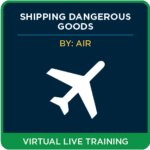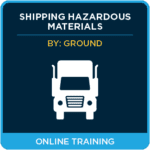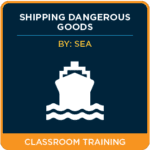
Part 1 – The Importance of Training for Regulatory Compliance
Training is an eternal problem that has been going on for so many years. I started my career in 1999, and at that time the regulations did not help us to define our needs for training requirements regarding the Transportation of Dangerous Goods Regulations (TDGR). It is fair to state that in many ways, we are not that much further ahead today.
It is essential to understand which sections of the Transportation of Dangerous Goods Regulations apply to your business to define whether or not your company should have a training program, and determine who in the company should receive training, what needs to be covered, the frequency of training, and how long the training needs to be for maximum effectiveness.
This blog is one of a series that will try to make it as clear as possible and help your process to establish the training needs for your employees.
We start by asking ourselves relevant questions that we will answer with regulatory sections and afterward, I will attempt to explain accurately and guide you to the best solution for your business.
Before I begin, I would like to clarify the term ”Transportation”. When Transport Canada uses the term transportation it is to include any activity that relates to the request for transportation by all modes of transport (contacting a carrier for a shipment either by ground, air, or sea), transportation (e.g. truck driver), handling (employees who prepare shipments and / or receive dangerous goods (DG), and also includes the import of DG by all modes of transport (air, sea, or transborder).
One of the problems with this term has always been that companies tend to believe that because they do not carry DG, this does not apply to them but it is wrong given what the term means.
Furthermore, we must ask ourselves the following question:
Who needs TDG training?
- Yes – if you are a driver/carrier: means a person who, whether or not for hire or reward, has possession of dangerous goods while they are in transport.
- Yes – if you are handling: means loading, unloading, packing, or unpacking dangerous goods in a means of containment for the purposes of, in the course of, or following transportation, and includes storing them in the course of transportation.
- Yes – if you offer for transport/consignor: means, for dangerous goods not in transport, to select or allow the selection of a carrier to transport the dangerous goods, to prepare or allow the preparation of the dangerous goods so that a carrier can take possession of them for transport, or to allow a carrier to take possession of the dangerous goods for transport.
Subsequently, a company must understand that they still represent a consignor because the definition in TDG is as follows:
Consignor: The person in Canada who,
- is named in a shipping document as the consignor; (that is, the physical address from which the DG is being shipped from)
- imports or who will import dangerous goods into Canada; (that is, the DG enters Canada by air, sea, or transborder) or
- if paragraphs (a) and (b) do not apply, has possession of dangerous goods immediately before they are in transport (that is, a warehouse company that provides storage services and subsequently prepares DG shipments for its customers).
So that’s it for now but stay tuned for more … in my next blog, we will go further into the process of how to establish your training needs.
Of course, you can contact us anytime so that we can help you in determining your training needs.
1-888-977-4834 in Canada or 1-888-442-9628 in The United States
See you next time!
Stay up to date and sign up for our newsletter!
We have all the products, services and training you need to ensure your staff is properly trained and informed.









